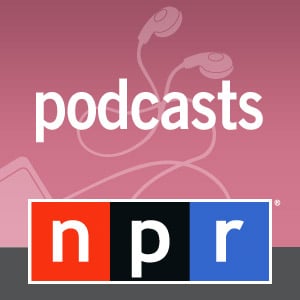

KPCC bought local news site LAist in February after its previous owner shut it down. We want to hear from and partner with them to provide the resources that will help bring their ideas to life.” “Future projects will do the same, embracing individuals and stories that are reshaping and redefining what it means to be American. in tone but spoke to a large national and international audience, showing that the issues that matter to Angelenos matter everywhere, and that the fascination with L.A.-centric stories is universal,” said SCPR chief content officer Kristen Muller.

“This year, we have found success with podcasts like The Big One and Tell Them, I Am - both of which were uniquely L.A. A $1.5 million donation from investor Gordon Crawford and his wife, Dona, is helping fund the launch of LAist Studios. The expansion comes on the heels of podcast projects including The Big One and Tell Them, I Am. In addition to L.A.-inspired projects, LAist Studios will also look to create narrative podcasts based on factual and fictional Southern California stories and projects based on SCPR’s journalism. It didn’t come at the expense of any of our journalism either.Obamas' Higher Ground Unveils Key Exec Team as Film/TV Co-Chief Steps Down

But I point it out because it’s the direction we want to go. The demographic that went up the most in the first quarter of 2016 was the 18 to 24 year-olds. When Mara Liasson and Ron Elving go on the network now, they sound more like they did with Sam and Tamara. It’s not being dumbed down, but it lacks the formality you might have heard on NPR. And it’s fascinating to hear them talk to one another, because it’s very conversational, very informal and it’s deeply substantive. On our politics podcasts, we’ve put together younger reporters like Sam Sanders and Tamara Keith working with like Mara Liasson and Ron Elving. What we’re attempting to do is make sure what we do on terrestrial captures a lot of the sound and the informality of podcasts. Once you get those listeners to sample NPR on the radio, how do you keep them? Nationally across our 264 members stations there are something like 1,600 producers and reporters. Local public radio has started adding local journalists. We think that’s the way to compete for the future. Great local journalism mixed with our national and international journalism – you don’t go to a podcast for that. But we also advocate very strongly that our member stations really focus on being live and being local and cover what’s happening in their markets. What we really advocate for member stations is “Morning Edition” and “All Things Considered” – they draw a massive audience in aggregate – 27 million people a week listen to NPR member stations for the news magazines. There is some overlap, but it’s really quite small. We’re not offering the same content in our podcasts that we do to our terrestrial radio stations. Why shouldn’t I worry that every minute someone listens to an NPR podcast is time not being spent with my station, especially when I’m trying to raise money during pledge drives? Let’s say I’m a local NPR member radio station that carries your programs. They might shift to the NPR Politics podcast or “The Hidden Brain” and know they can hear its host Shankar Vedantam on “Morning Edition.” The preliminary data we’re seeing is that while there comes a lot of interest from people who have not been listening to public radio at all that are starting to discover us. We hear versions of the same story – somebody listens to Invisibilia and we promote other podcasts heavily in it – some of which might be news. They get excited about a podcast and then start listening. We’re seeing some very encouraging signs that younger people are coming into NPR that previously haven’t listened. Most new media technologies that come along typically cannibalize the old ones. Mohn, a onetime top 40 disc jockey and former cable executive who took over NPR in 2014, told The Times why he believes podcasts can be the gateway to getting younger listeners hooked on the electronic medium their parents grew up with. It’s a reversal for the nonprofit broadcasting service that has watched its audience decline and age in recent years. But NPR’s listening on traditional terrestrial radio has been trending up as well, with an overall gain of 16% for its signature news magazine programs “Morning Edition” and “All Things Considered” in first quarter of 2016. The recent ranking from measurement service Podtrac shows that 7.5 million people are listening to NPR’s podcasts each month, making it the most popular supplier of the audio-on-demand programs created for digital devices. Will podcasting kill the radio star? National Public Radio President and Chief Executive Jarl Mohn doesn’t think so.


 0 kommentar(er)
0 kommentar(er)
